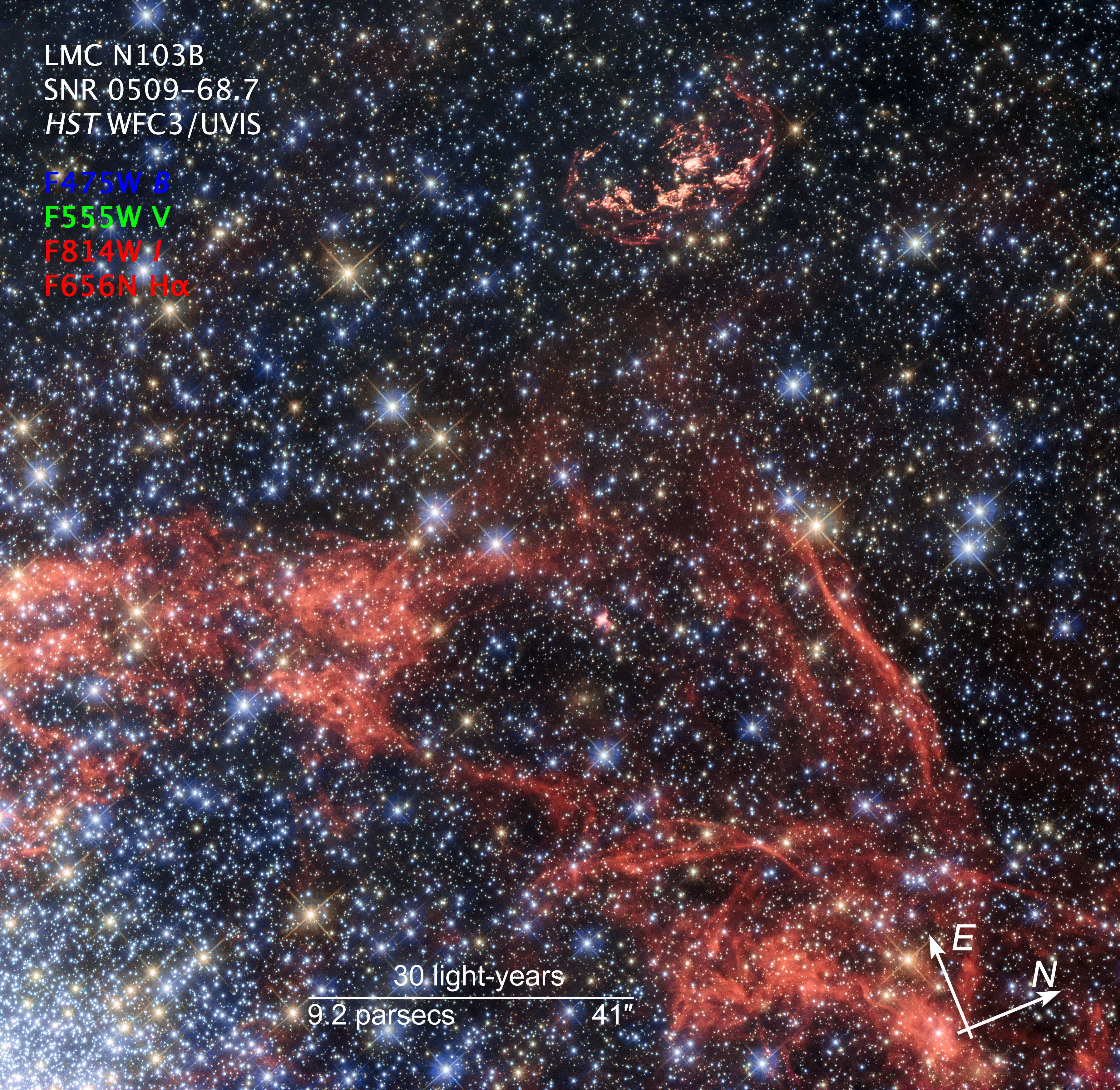1 min read
Scale and Compass Image for N103B

About the Object
- DistanceDistanceThe physical distance from Earth to the astronomical object. Distances within our solar system are usually measured in Astronomical Units (AU). Distances between stars are usually measured in light-years. Interstellar distances can also be measured in parsecs.160,000 light-years away
About the Data
- InstrumentInstrumentThe science instrument used to produce the data.HST>WFC3/UVIS
- Exposure DatesExposure DatesThe date(s) that the telescope made its observations and the total exposure time.June 2014
- FiltersFiltersThe camera filters that were used in the science observations.F475W B, F555W V, F814W I, and F656N Hα
- Object NameObject NameA name or catalog number that astronomers use to identify an astronomical object.SNR 0509-68.7, LMC N103B
- Object DescriptionObject DescriptionThe type of astronomical object.Supernova remnant
- Release DateMarch 30, 2017
- Science ReleaseSearch For Stellar Survivor of a Supernova Explosion
- Credit

Color Info
Color InfoA brief description of the methods used to convert telescope data into the color image being presented.
Blue: F475W B Green: F555W V Red: F814W I + F656N Hα

Compass and Scale
Compass and ScaleAn astronomical image with a scale that shows how large an object is on the sky, a compass that shows how the object is oriented on the sky, and the filters with which the image was made.
Related Images & Videos

Wispy Remains of Supernova Explosion Hide Possible Survivor
This image, taken with NASA's Hubble Space Telescope, shows the supernova remnant SNR 0509-68.7, also known as N103B. It is located 160,000 light-years from Earth in a neighboring galaxy called the Large Magellanic Cloud. N103B resulted from a Type Ia supernova, whose cause...
Share
Details
Last Updated
Aug 17, 2025
Contact
Media
Claire Andreoli
NASA’s Goddard Space Flight Center
Greenbelt, Maryland
claire.andreoli@nasa.gov






























